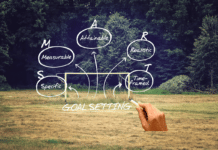In the modern world, creativity—the capacity to create something original or novel—is a necessary skill. For ongoing success in any field—art, science, writing, research, entrepreneurship, or leadership—creativity is a priceless asset. Having the proper methods and approaches to release your untapped creative potential is more important for creative accomplishments than it is necessarily having a natural predisposition for creative ideas. Thankfully, creativity is teachable, and this article will offer ten pointers to help you develop your creative muscles and become more creative.
What Is Creativity?
A broad term, creativity includes practically any practice or activity requiring inventiveness, inspiration, or ingenuity. It is the procedure of generating concepts, solving problems, expressing feelings, organizing, producing objects, and gaining understanding. Creativity, then, is essentially about making new, yet practical, connections.
This 10-step manual tries to clarify creativity and provide readers with the knowledge and methods needed to become more creative.
Understanding Your Creative Strengths and Weaknesses
Identifying where you are today is the first step in increasing creativity. Everybody has different creative talents and shortcomings, and certain tendencies are comparatively simpler to spot than others.
Though visual artists may work with sketching, painting, sculpting, or digital design, mappers and writers typically choose writing strategies like brainstorming, mind-mapping, and clustering. Model-making, systems thinking, or CAD software may be preferred by architects.
- Think about your inclinations, your natural interests, and your past successes. What kinds of casual pursuits do you do to release your creativity? Maps in the head? Creating sketches? Prose? Is she singing? Stepping out? Playing about with things? Singing your thoughts out?
- Having determined your strengths and limitations, you may concentrate on the areas where you wish to develop your creativity. Perhaps you’d like to paint or illustrate something you drew in your journal. Maybe you wish to create a novel answer to an issue in your industry.
This is your chance to set clear and deliberate goals for yourself. Jot down your objectives and come return to them if you run out of ideas.
Set Aside Time to Be Creative
You must set out time to be creative if you are to reach your full creative potential. Telling oneself we have to come up with something fresh and creative can easily make us feel overwhelmed or afraid. Rather, start with little creative outbursts and concentrate only on exploring and playing.
You don’t have to confine your creative time to a certain hour or even an entire day. Try your hand at music, writing, photography, video, visual and three-dimensional art. Don’t limit yourself to one medium.
Reduce Creative Blocks
While creative obstacles might be crippling, don’t give up if they happen. Standing back, admit your dissatisfaction and sense of powerlessness. Improving your creativity mostly involves learning how to deal with creative barriers.
A technique to lessen creative obstacles is to get comfortable with them. Creative blockages are a natural aspect of the creative process; instead of viewing them as barriers that will keep you from producing something original and fascinating. They can allow you to reconsider your goals and to come up with fresh approaches to the issue.
Engage in Behavioral Activation
One approach intended to assist people in being actively involved with the world is Behavioral activation. It is the concept of advancing by means of little stages connected to a bigger objective. Behavioural activation improves drive, lowers procrastination, and helps to overcome creative obstacles.
Start simple and work your way up in complexity as you become used to the development rate. Making a number of little changes enables you to take charge of your growth. Reward yourself for your little accomplishments, don’t forget.
Go Hunting for Inspiration and Ideas
Often, unanticipated sources can inspire. Go to talks, look around at displays, and discover places you don’t typically go. It can help to arouse ideas and stimulate the creative process to be among novel stimuli.
Even routine chores might inspire you; cooking dinner or walking the dog can be surprisingly creative undertakings. Take pictures of anything or views that grab your attention with your smartphone. Additionally helpful in igniting the creative pathways in your brain is listening to music or podcasts while writing or creating.
Work with a Space That Is Conducive to Creativity
Your creative experience can either be made or broken by the creative place you choose. Having a messy desk or workspace can be inconvenient and lower output. Assemble a distraction-free space so you can concentrate on the creative spark.
Make sure you have paper, pens, a laptop or canvas, and whatever other equipment you may need on hand. Increased natural light can also aid to increase your energy levels.
Develop the Confidence to Act on Your Ideas
Developing creativity mostly requires self-assurance in your work and good communication skills. Grow in your knowledge and believe that you can achieve your creative objectives if you keep an open mind, are dedicated, and take steady little steps.
Confidence building takes time. Create reasonable objectives for yourself and, if needed, get outside validation. Recall that you are more likely to succeed the more sure you are in your own thoughts.
Ultimately, practice can help one become more creative. Starting with figuring out which creative thinking techniques suit you the most, consider your creative goals. Make time to study and practice, and allow yourself to try out various methods. Moreover, you can build your creative muscles by lowering creative obstacles, doing behavioural activation, and creating a creatively friendly environment. Above all, believe that you are capable of what you produce and have the courage to follow your ideas.









